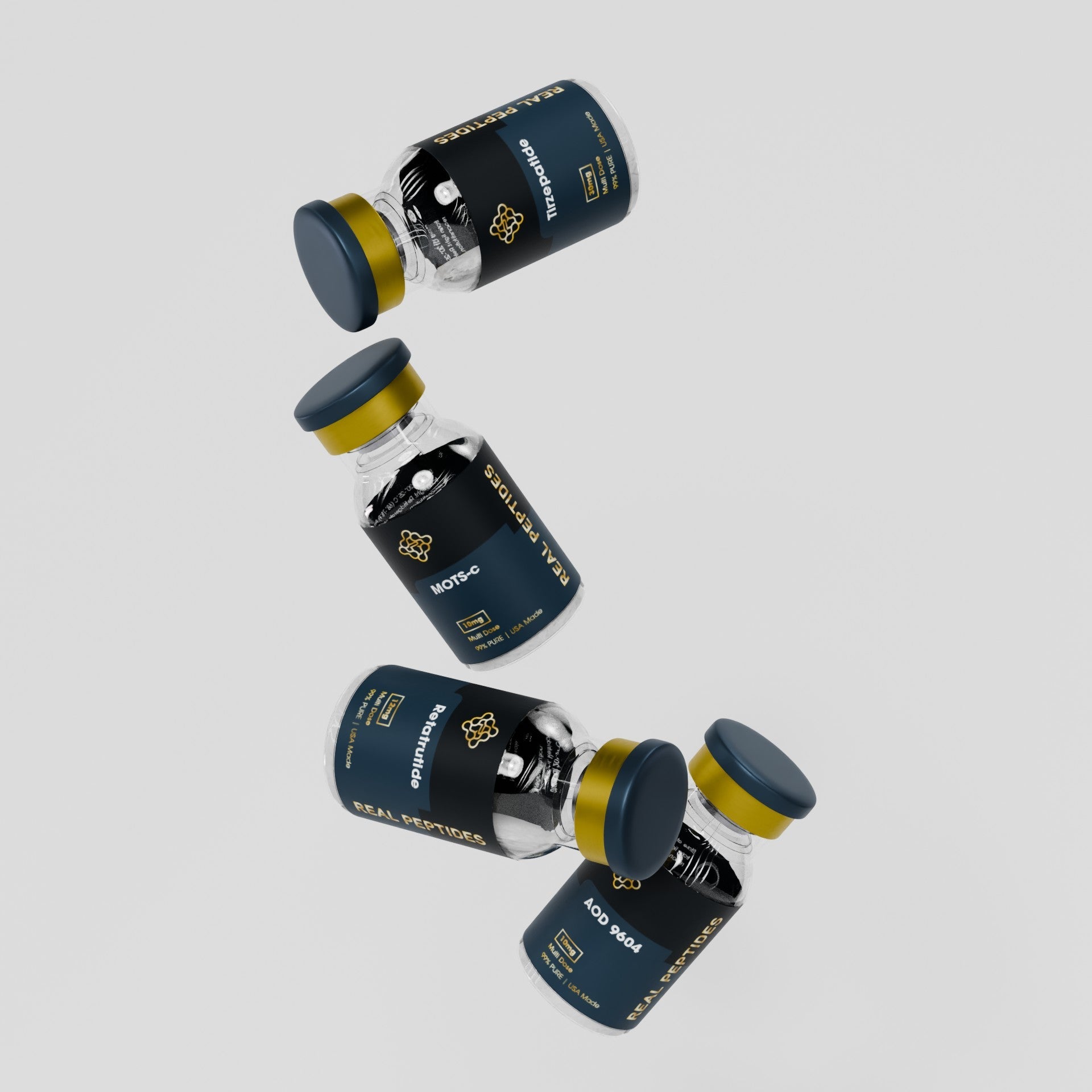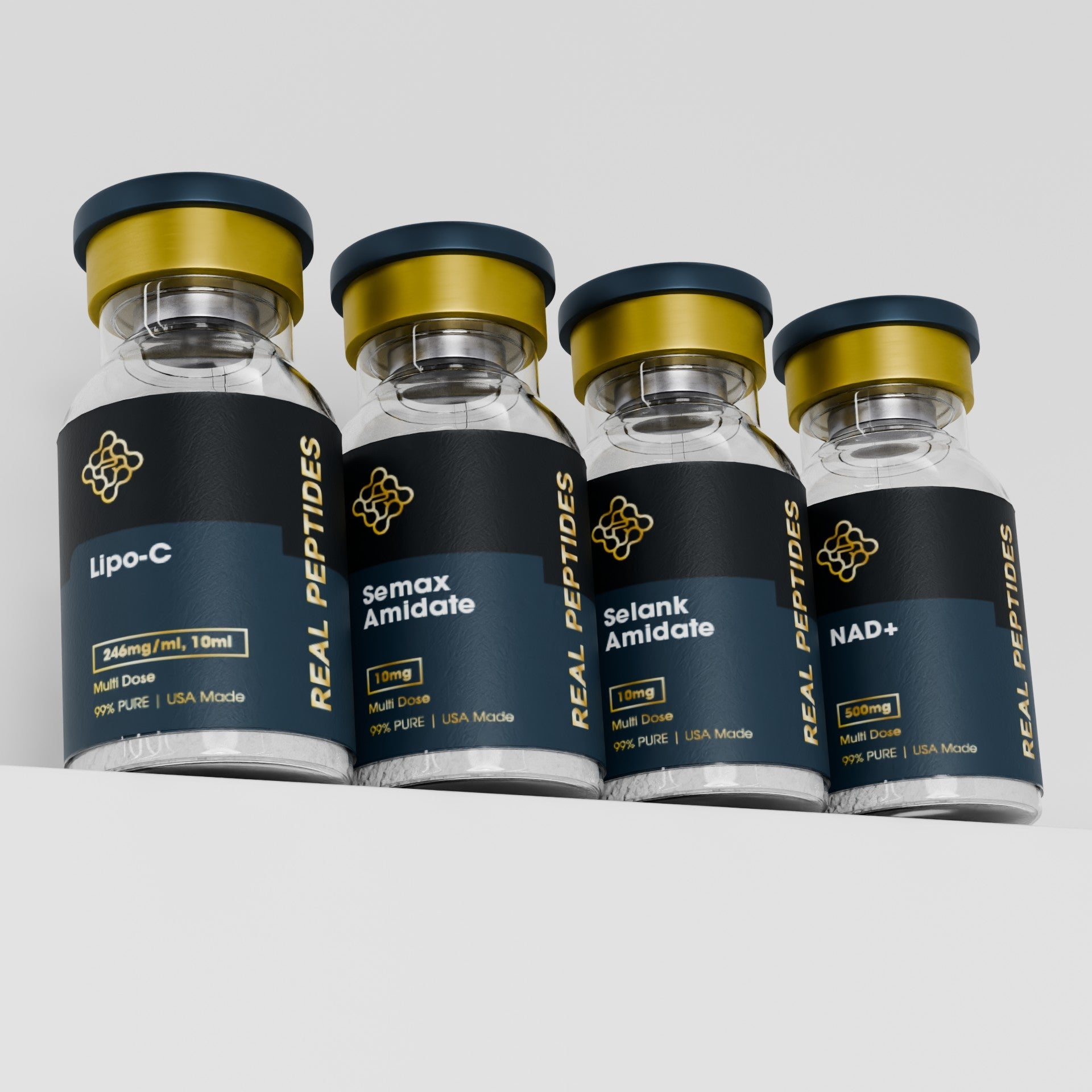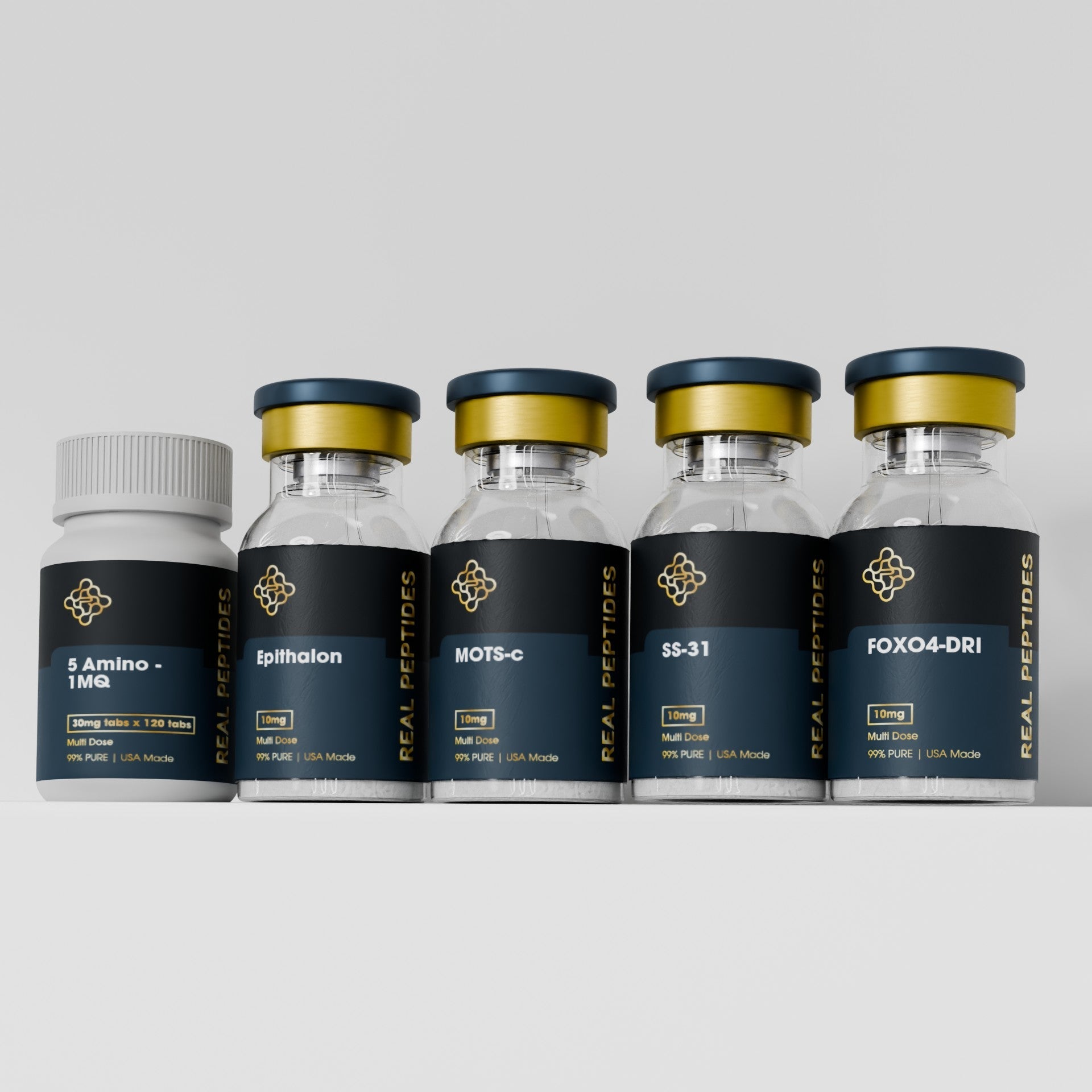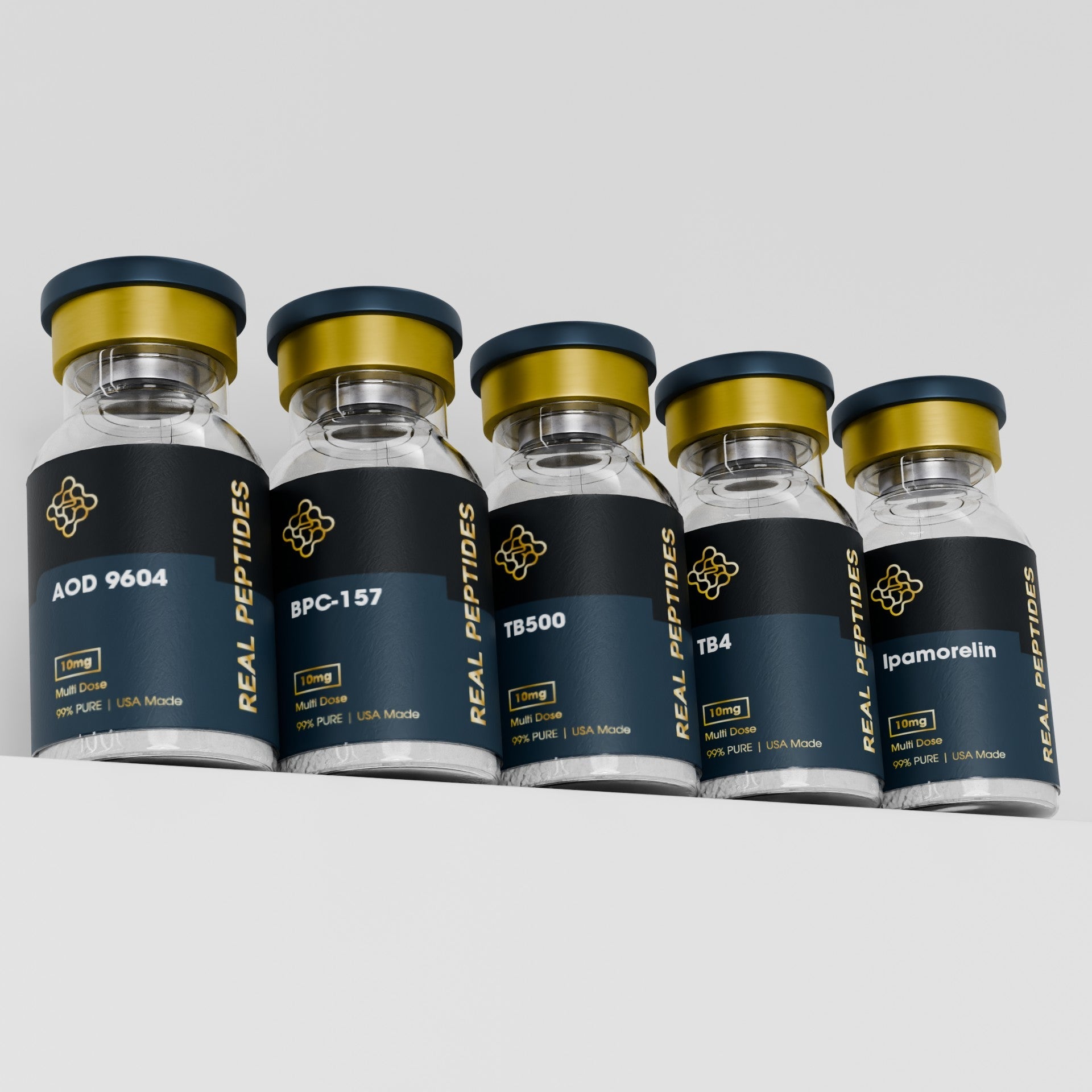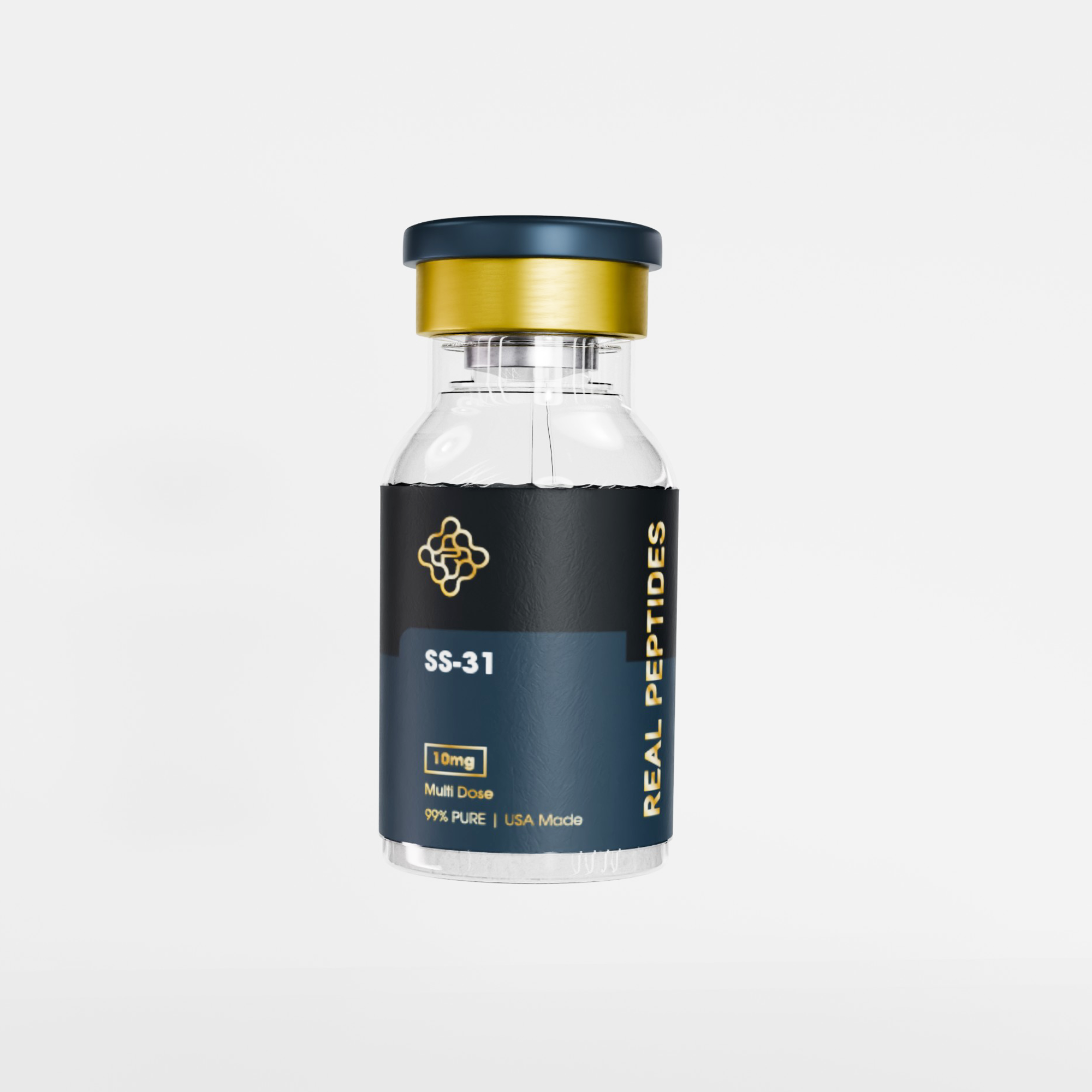
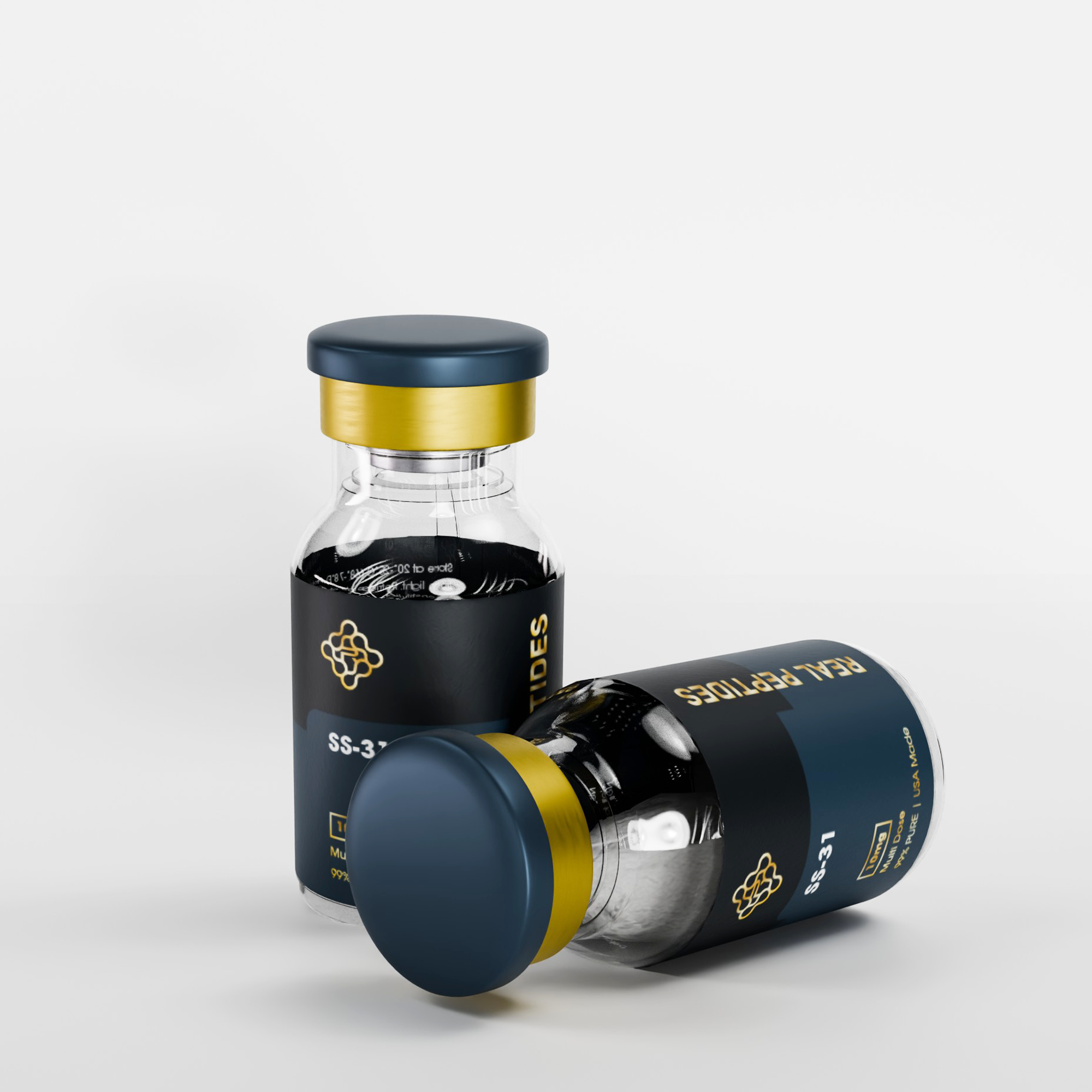
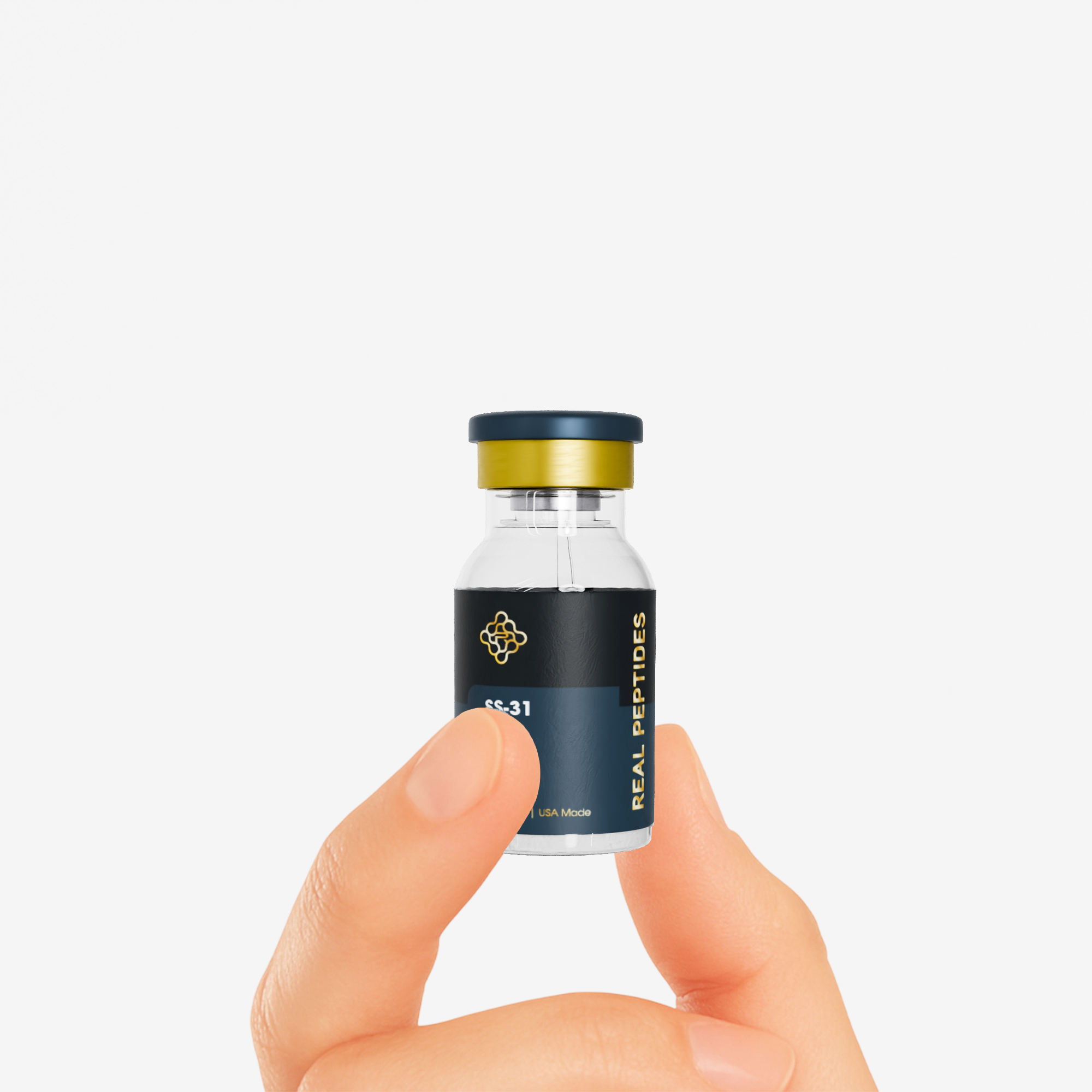
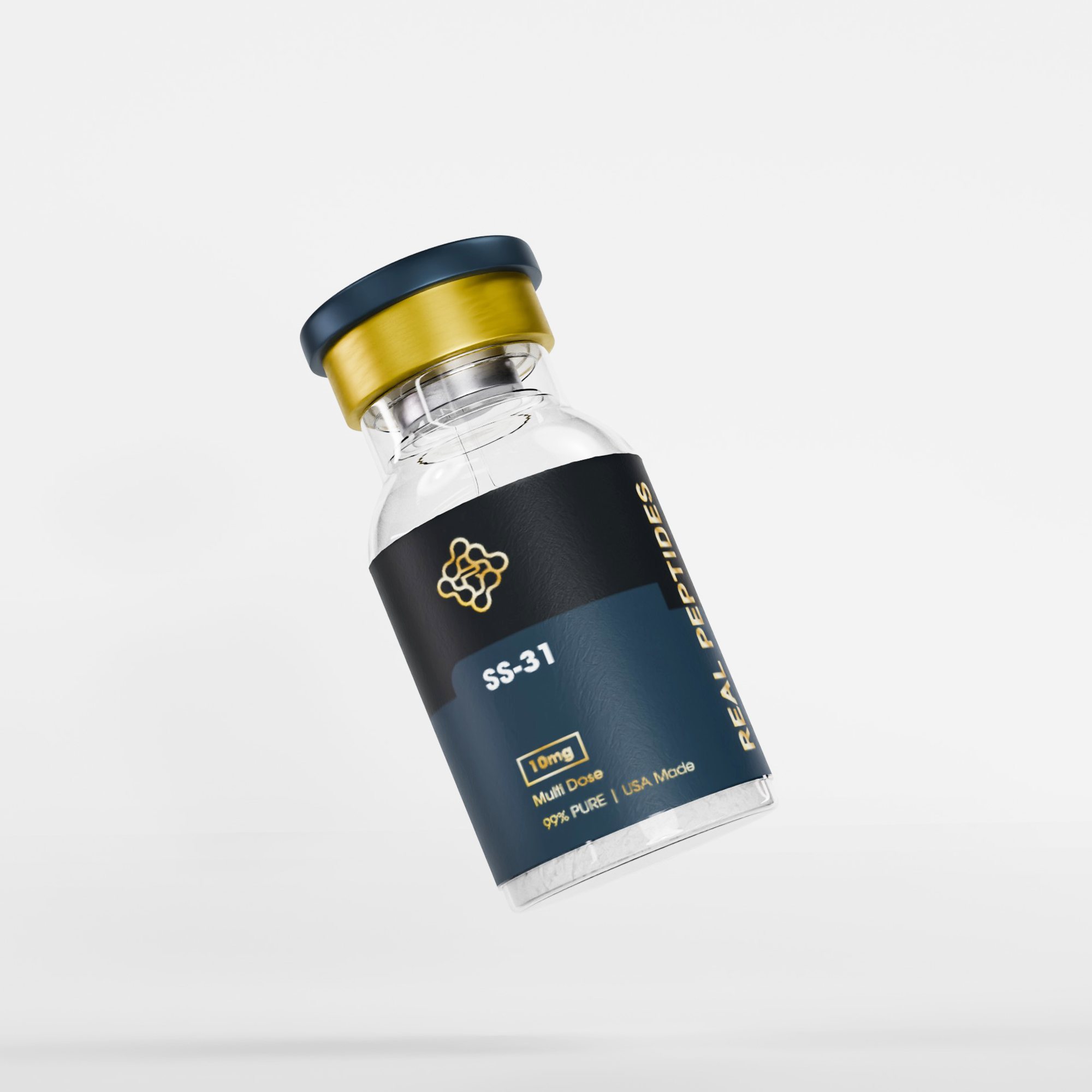
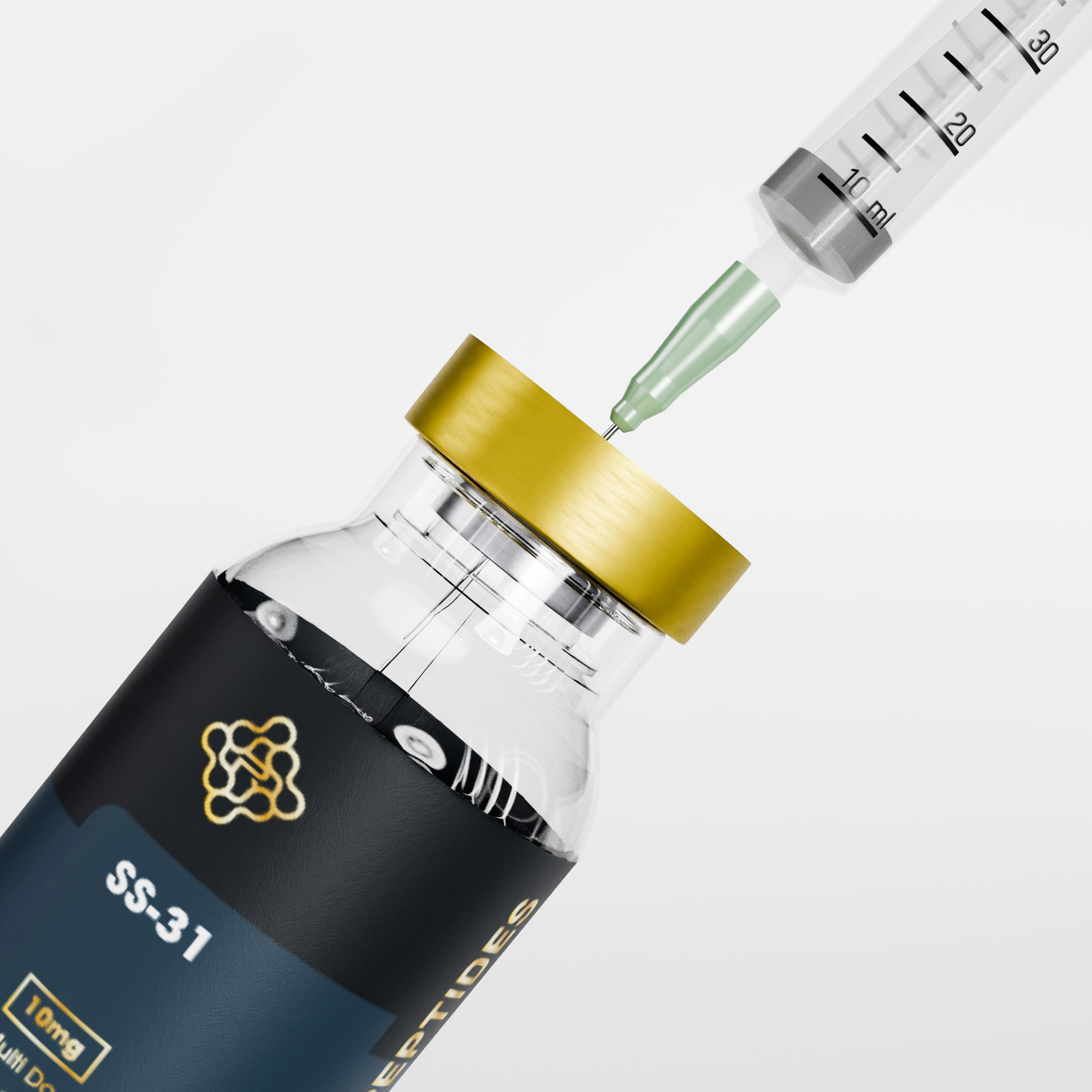
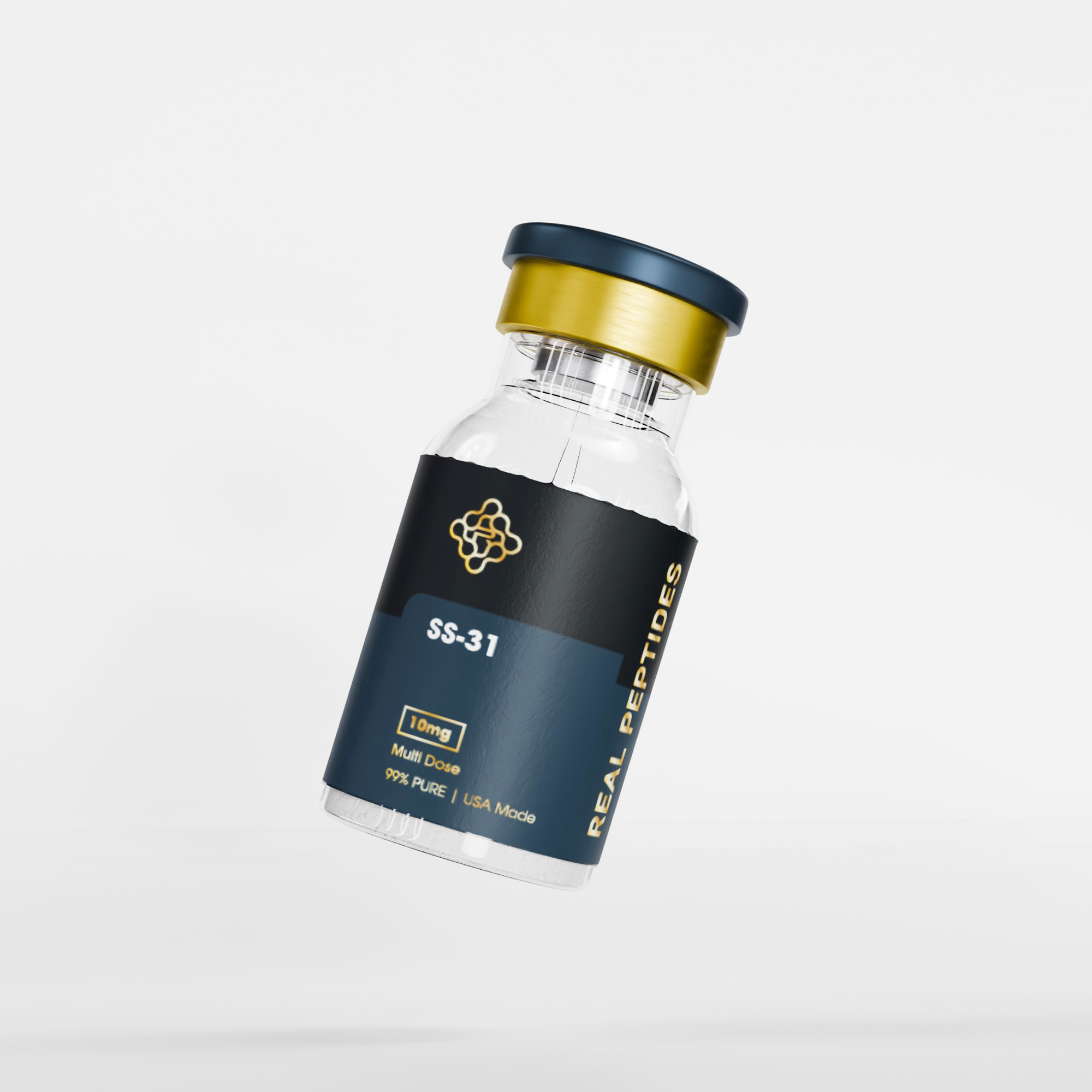
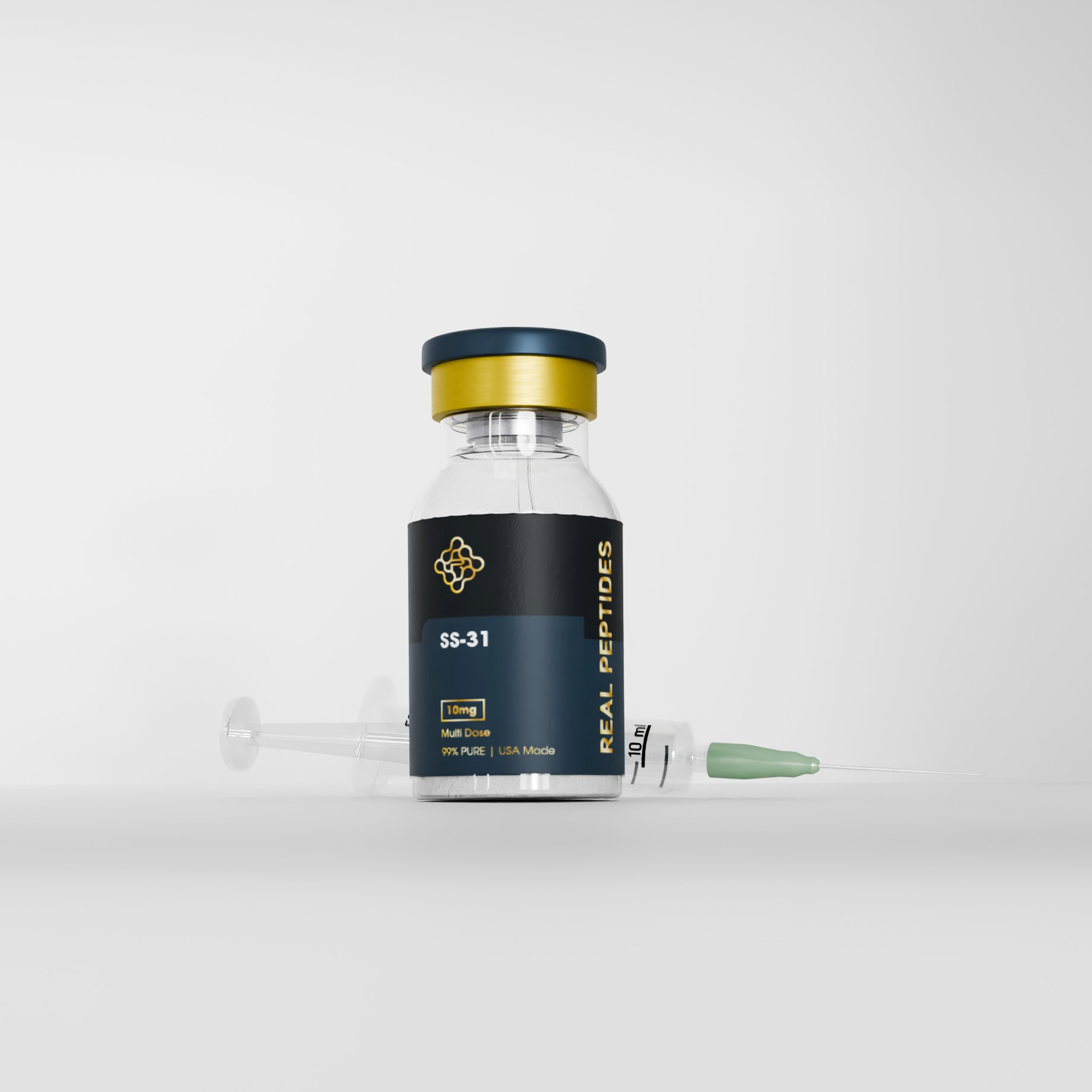
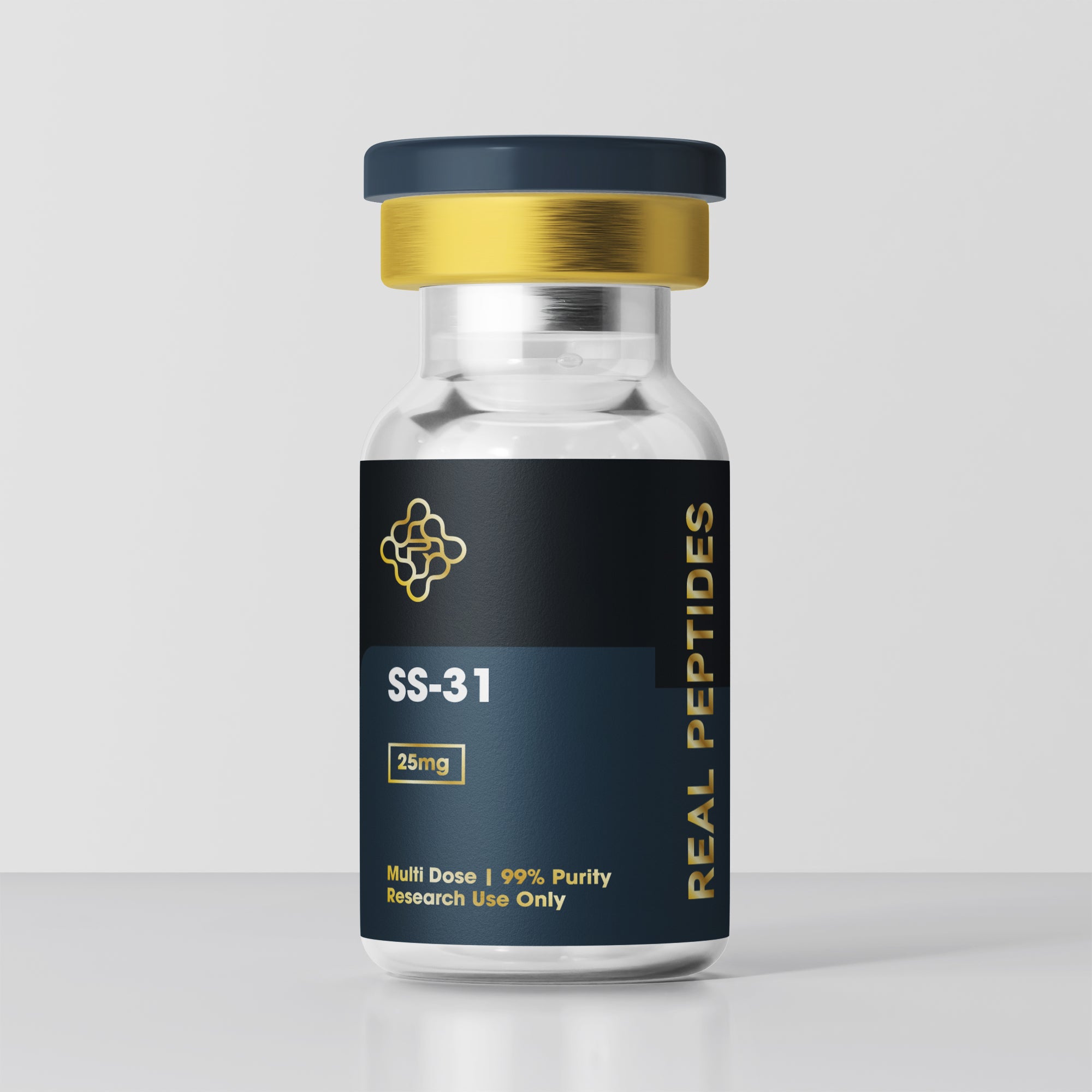
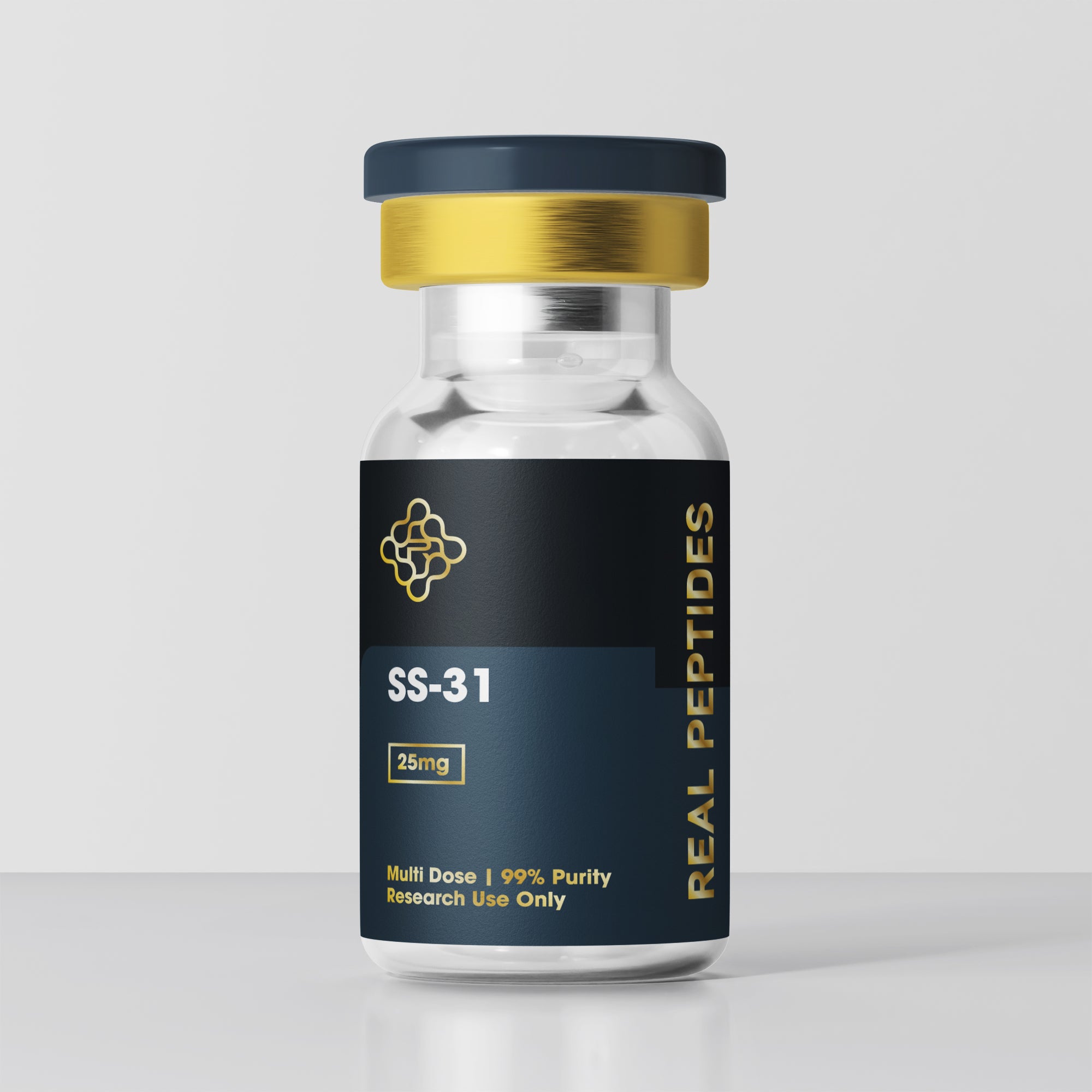
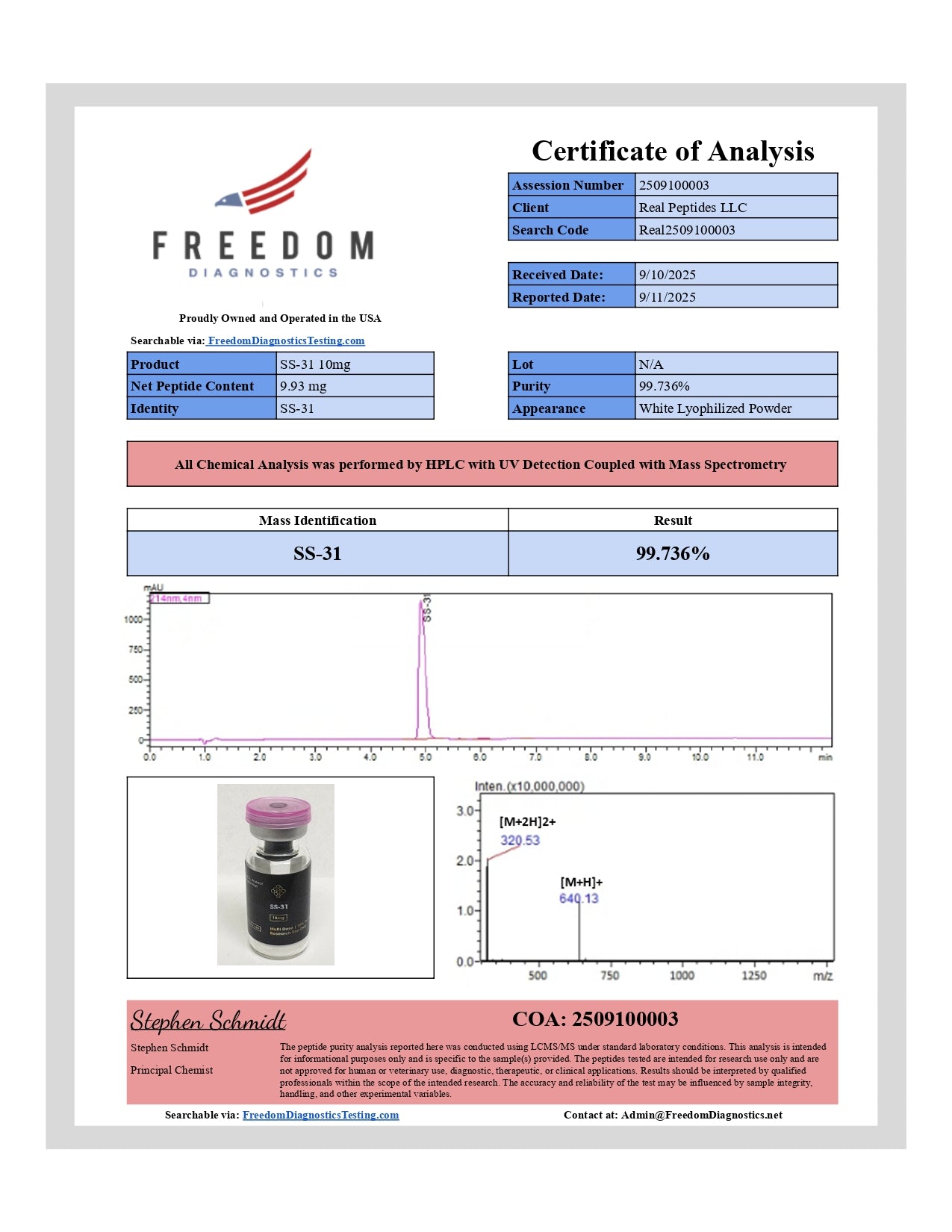
SS-31 (Elamipretide)
SS-31 (Elamipretide) is a synthetic tetrapeptide engineered to target the inner mitochondrial membrane and scavenge reactive oxygen species. Widely used in cell and tissue models, SS-31 supports studies of mitochondrial bioenergetics, oxidative-stress mitigation, and cell survival signaling. Each lot is produced under ISO-certified conditions, confirmed ≥99% purity by HPLC, screened for endotoxin (<0.1 EU/mg), and shipped with a full Certificate of Analysis.
⚠️ Important Disclaimer
For Research Use Only. Not for human consumption or therapeutic treatment.
Pairs well with
Peptides are not ready to use. Must purchase BAC water for reconstitution.

SS-31 (Elamipretide)
SS-31
Mitochondrial ROS Scavenging
SS-31 localizes to the inner mitochondrial membrane and neutralizes superoxide and hydroxyl radicals, modeling oxidative-stress reduction in cell assays.
Enhanced ATP Production
In isolated mitochondrial preparations, SS-31 preserves electron-transport efficiency and increases ATP yield under stress conditions.
Membrane Stabilization
SS-31 interacts with cardiolipin to maintain cristae structure, supporting studies of mitochondrial integrity in ischemia–reperfusion models.
Anti-Apoptotic Signaling
In neuronal and cardiomyocyte cultures, SS-31 reduces cytochrome-c release and caspase-3 activation, providing a tool for apoptosis-pathway research.
Inflammation & Cytokine Modulation
Preclinical tissue models show SS-31 lowers pro-inflammatory markers (IL-1β, TNF-α), enabling exploration of mitochondrial-linked immune responses.
Lab-Grade Handling & Stability
Reconstitute SS-31 in SWFI or BAC water, store lyophilized at –20 °C, and keep reconstituted solutions at 2–8 °C for up to 7 days with ≥98% peptide integrity.


What Is SS-31?
SS-31, also known as Elamipretide, is a cell-permeable tetrapeptide (D-Arg-Dmt-Lys-Phe-NH₂) designed to selectively bind cardiolipin in the inner mitochondrial membrane. In research models, SS-31 is used to probe mitochondrial function, oxidative-stress pathways, and energy-production mechanisms under conditions of metabolic or ischemic challenge.

Why Choose SS-31?
Researchers choose SS-31 for its unparalleled ability to concentrate in mitochondria and neutralize reactive oxygen species at the site of production. Its robust preservation of electron-transport chain efficiency translates into higher ATP levels and reduced apoptotic signaling in diverse cell types. Manufactured under cGMP-like, ISO-certified conditions, every SS-31 batch delivers consistent performance, backed by rigorous HPLC purity testing and endotoxin screening for reliable protocol integration.

What Sets SS-31 Apart?
Unlike general antioxidants, SS-31 uniquely targets the mitochondrial inner membrane by binding cardiolipin, stabilizing cristae structure, and preserving bioenergetic capacity. This dual action—membrane stabilization plus ROS scavenging—allows clear investigation of mitochondrial health, apoptosis, and inflammation without off-target effects. Its demonstrated stability in both lyophilized and reconstituted states ensures reproducible results across in vitro and ex vivo studies.
Research Studies
Mitchell et al. (2013)
“SS-31 Preserves Mitochondrial Function in Ischemia–Reperfusion Injury,” Journal of Molecular and Cellular Cardiology.
Birk et al. (2014)
“Mechanism of SS-31: Cardiolipin Interaction and ROS Scavenging,” Free Radical Biology & Medicine.
SS-31 FAQs
What is SS-31 (Elamipretide) peptide?
SS-31 is a synthetic tetrapeptide (D-Arg-Dmt-Lys-Phe-NH₂) designed to target the inner mitochondrial membrane and scavenge reactive oxygen species in research models.
How does SS-31 protect mitochondria?
By binding cardiolipin, SS-31 stabilizes mitochondrial cristae architecture and neutralizes superoxide and hydroxyl radicals at the source of oxidative stress.
What research applications use SS-31?
SS-31 is used in assays of mitochondrial bioenergetics, oxidative-stress mitigation, apoptosis pathways, and ischemia–reperfusion injury models.
How is SS-31 reconstituted for lab studies?
Reconstitute SS-31 in Sterile Water for Injection (SWFI) or Bacteriostatic Water (BAC) and follow your lab’s SOP for final concentration.
What is the recommended storage for SS-31?
Store lyophilized SS-31 at –20 °C; reconstituted solutions remain stable at 2–8 °C for up to 7 days without significant degradation.
Does SS-31 affect ATP production?
Yes—SS-31 preserves electron-transport efficiency under stress, resulting in higher ATP yield in isolated mitochondrial and cell-based assays.
Can SS-31 be combined with other peptides?
Researchers often co-study SS-31 with antioxidants or anti-inflammatory peptides (e.g., AHK-Cu, BPC-157) to explore synergistic cytoprotection.
Is SS-31 approved for human use?
No. SS-31 is strictly for laboratory research only and is not approved for therapeutic or veterinary application.
What concentrations are typical for SS-31 in cell culture?
In vitro experiments commonly use SS-31 at 0.1–10 µM, depending on cell type and assay endpoints.
Where is SS-31 manufactured and tested?
SS-31 is synthesized in ISO-certified U.S. labs, with each batch validated for ≥99% purity by HPLC and screened for endotoxin (<0.1 EU/mg).


